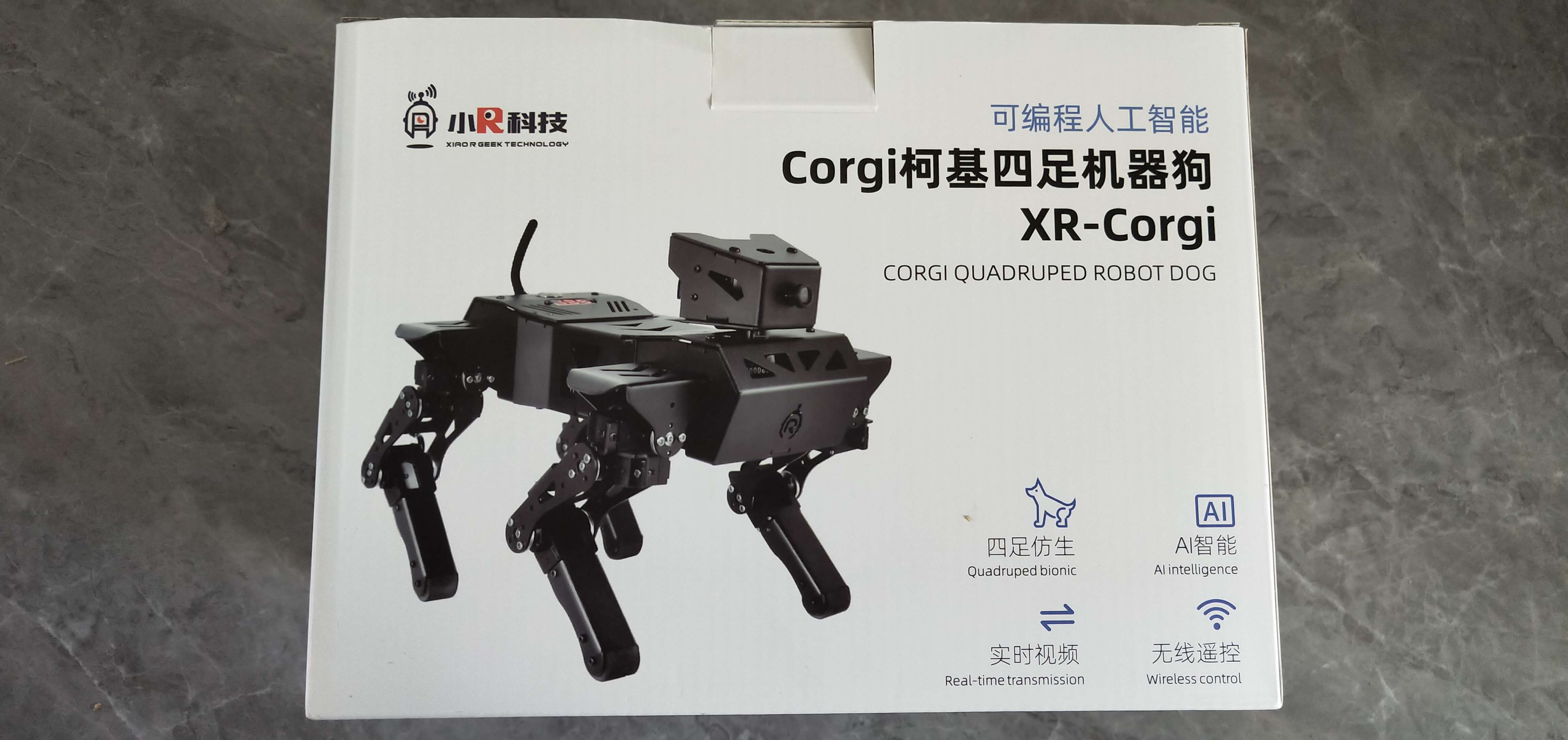1. Unboxing
1. Packaging design
After receiving the express delivery of the ESP32 Corgi robot dog, I couldn't wait to open the package. The entire packaging box is simple and stylish, with the image of the robot dog and some product specifications printed on the front. The interior of the package uses customized foam plastic, which can effectively protect the robot dog from impact during transportation.

2. Contents list
After opening the package, I found that it contains the following parts:

ESP32 Corgi robot dog body
Charging cable (USB-C)
Instruction manual
Some screws and tools
All accessories are neatly placed in the package, which is very satisfying.

2. Appearance Design
1. Appearance Features
The appearance design of the ESP32 Corgi robot dog is very cute, and the overall appearance is a small dog. Its main part uses a wear-resistant anodized aluminum alloy shell, which is lightweight and very durable. The edges around it have been rounded and feel good. A camera is installed in front of the robot dog, which can transmit video to the mobile phone APP in real time.
2. 12-degree-of-freedom joints
Each leg of the robot dog uses 3 servos as active joints. This design allows the robot dog to imitate the gait of animals vividly and simulate some bionic movements of animals. The robot dog also has a built-in IMU, which allows the robot dog to maintain a horizontal balance state no matter what posture it is in, making the robot dog very stable when walking.

3. Sensor layout
In front of the robot dog, an ultrasonic sensor is installed for obstacle avoidance and ranging. This allows the robot dog to move freely in complex environments and avoid collisions.
3. Functions and performance
1. Control methods
The ESP32 Corgi robot dog can be controlled in a variety of ways, mainly including:
Wi-Fi control: After connecting to Wi-Fi, the robot dog's actions can be controlled through a mobile phone application or browser.
Bluetooth control: Use a Bluetooth device for control, suitable for close-range use.
Self-programming: Users can program the robot dog through Arduino IDE or other development tools to achieve personalized functions.
2. Walking performance
During the test, I let the robot dog perform some basic walking functions. It performs very well on different surfaces, including floors, carpets and outdoor grass. In terms of obstacle avoidance, the ultrasonic sensor's feedback is also quite sensitive, and it can detect obstacles in front in time and make adjustments. It can also be configured with the ROS system, and only needs to install a laser radar to achieve indoor mapping, fixed-point navigation, path planning and other functions.
3. Sound effects and interaction
This robot dog also supports simple sound effect playback, and can emit different sound effects through the built-in speaker. Although its sound quality is not particularly outstanding, it is enough to meet simple interactive needs. For example, I can use voice to let it execute simple commands such as forward, backward, turn left, turn right, etc.
IV. Programming and scalability
1. Development environment
The programming environment of ESP32 Corgi robot dog is relatively simple, supporting Arduino and graphical programming. For beginners, Arduino IDE is a very friendly choice, and there are a lot of tutorials and sample codes online for reference.
2. Function expansion
Due to the open design, users can add different sensors and modules according to their needs. For example, I tried to connect a depth camera module to give the robot dog the ability to recognize deep images. This scalability is very suitable for makers and DIY enthusiasts.
V. User experience
1. Getting started experience
For me, getting started with ESP32 Corgi robot dog is not as difficult as I imagined. Basic functions can be achieved through simple settings and programming. Even beginners can quickly get started after building and configuring according to the steps in the manual.
2. Fun
It makes me feel very interesting to operate this robot dog. Whether it is letting it walk autonomously or setting actions through code programming, it will bring a great sense of accomplishment. Especially after completing the personalized programming, seeing the robot dog act according to my instructions, the satisfaction is beyond words.
3. Potential shortcomings
Of course, the ESP32 Corgi robot dog also has some shortcomings. For example, the battery life is relatively short, and long-term operation may cause the battery to run out. In addition, although the robot dog has obstacle avoidance function, its performance in complex environments can be further optimized.
VI. Summary
The ESP32 Corgi robot dog is a creative and fun smart robot. It is not only suitable for beginners to get started with programming and robotics technology, but also provides a broad expansion space for experienced makers. Overall, whether in terms of appearance design, performance, or user experience, this robot dog has shown good qualities.
For friends who like robots or electronic technology, I strongly recommend trying the ESP32 Corgi robot dog. Whether as a learning tool or a toy, it can bring you unlimited fun and inspiration. I hope to see more similar products in the future to add intelligence and joy to our lives.

